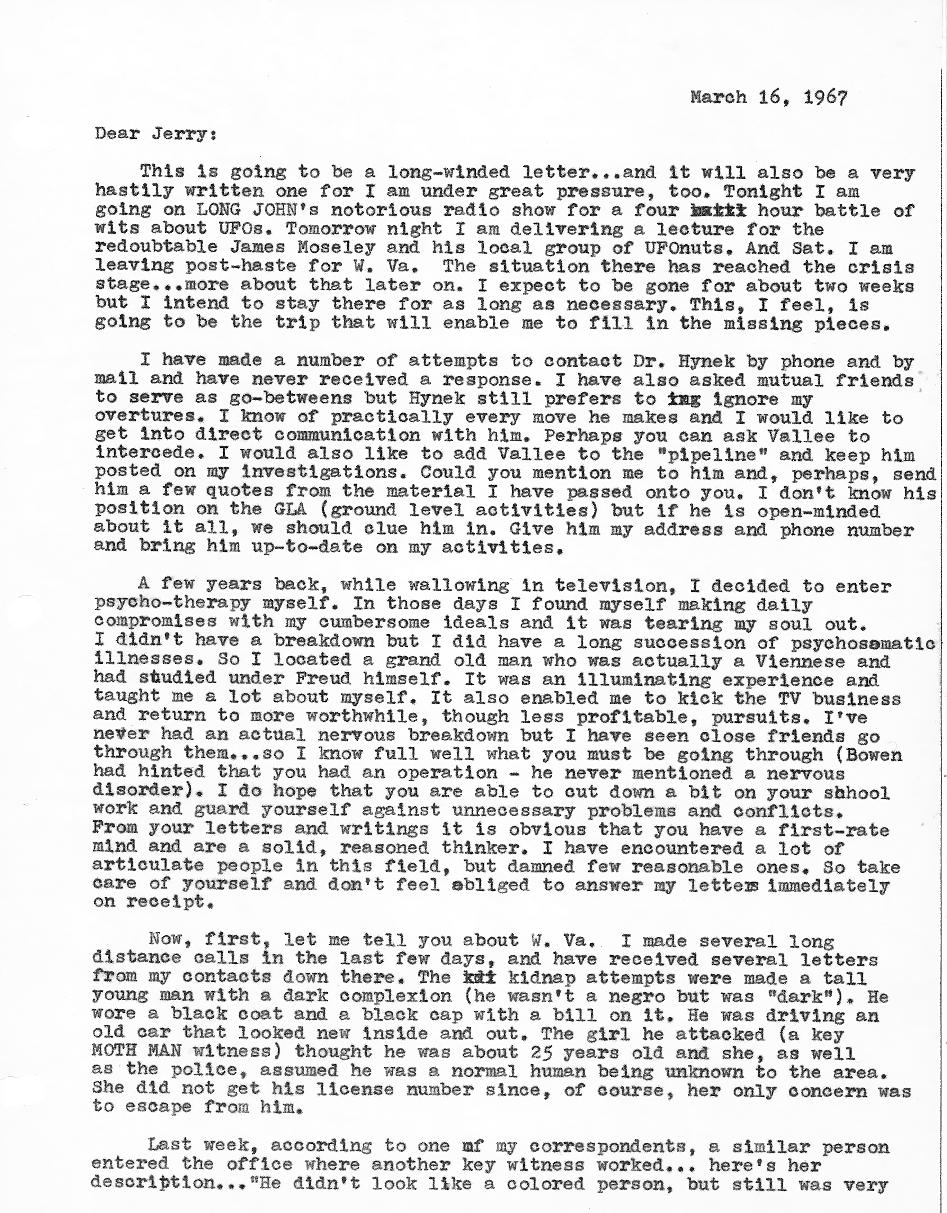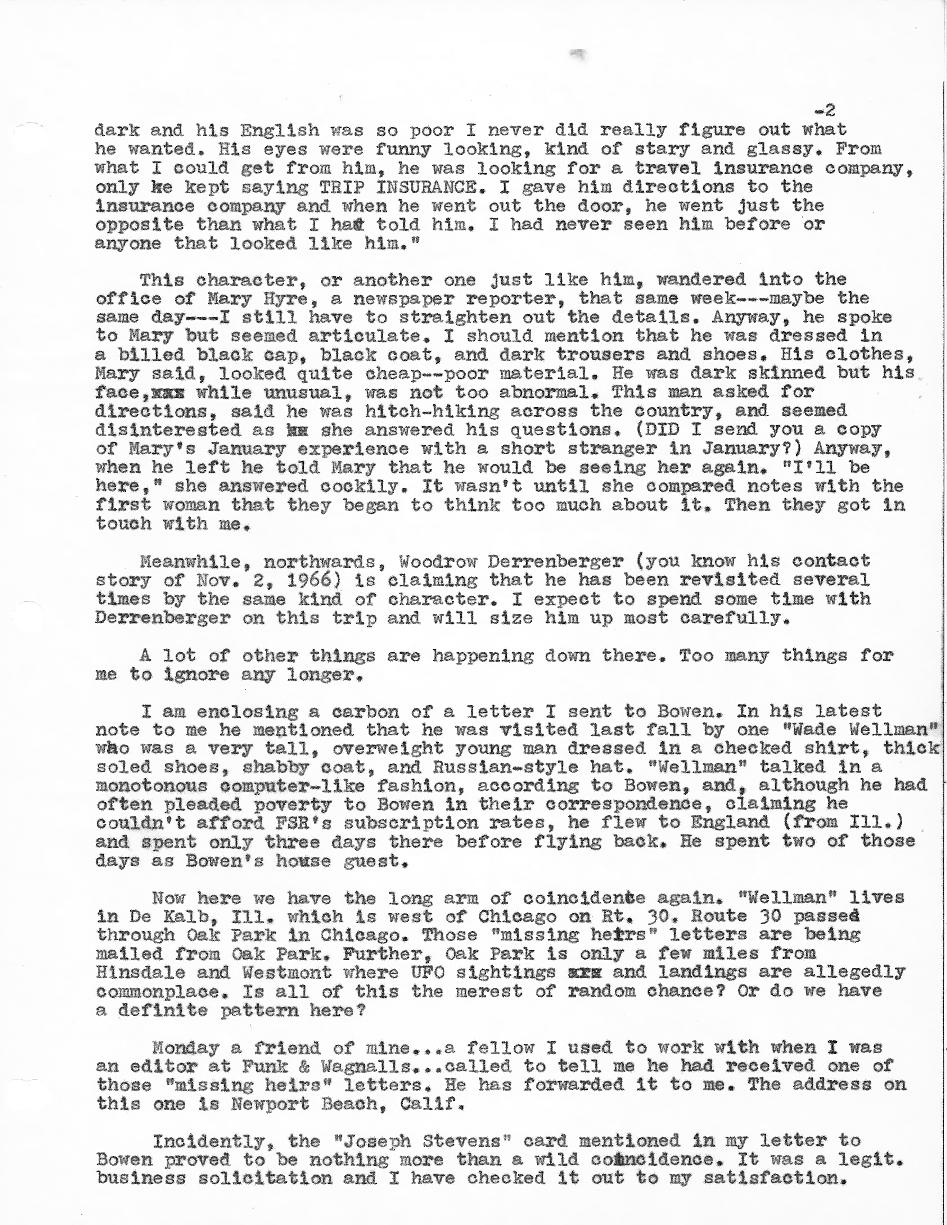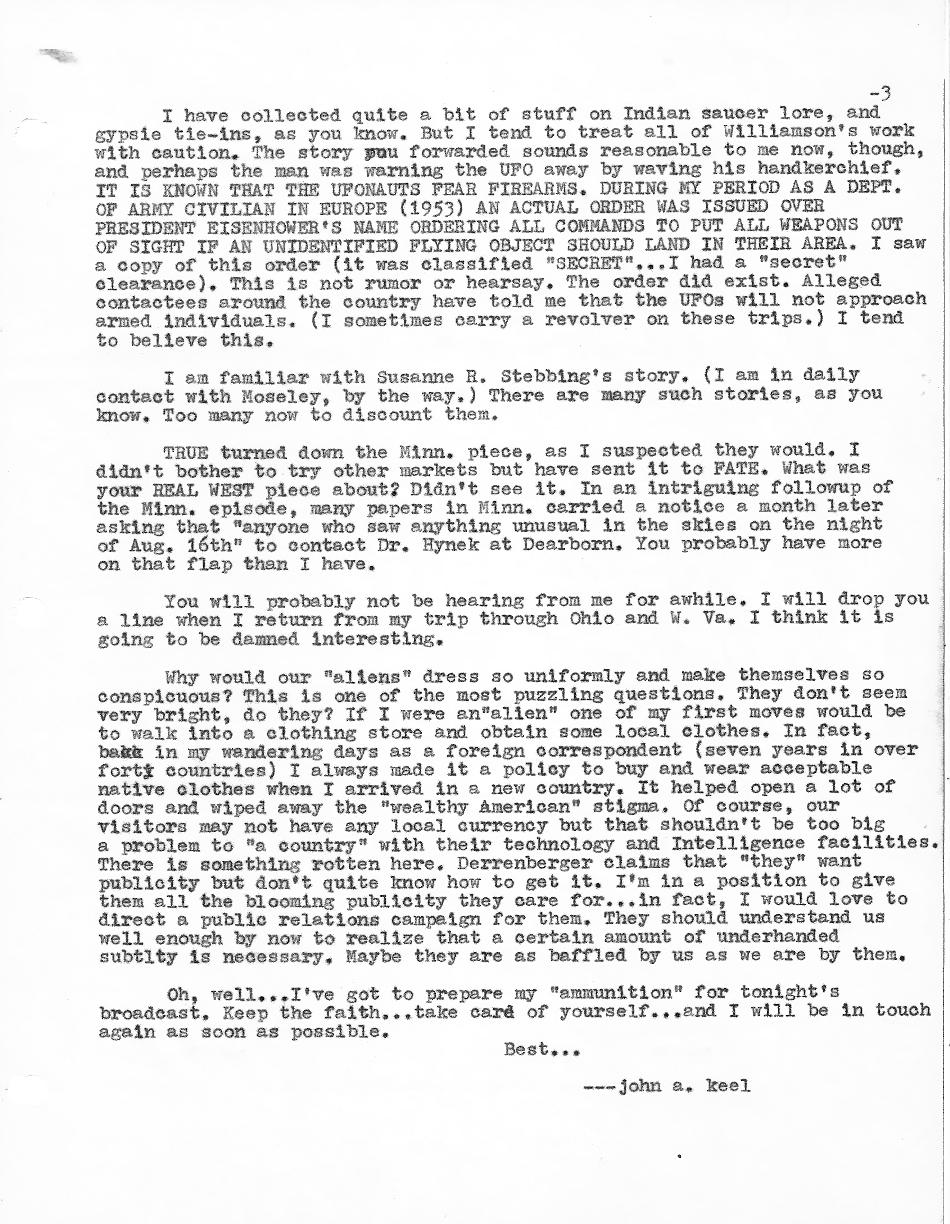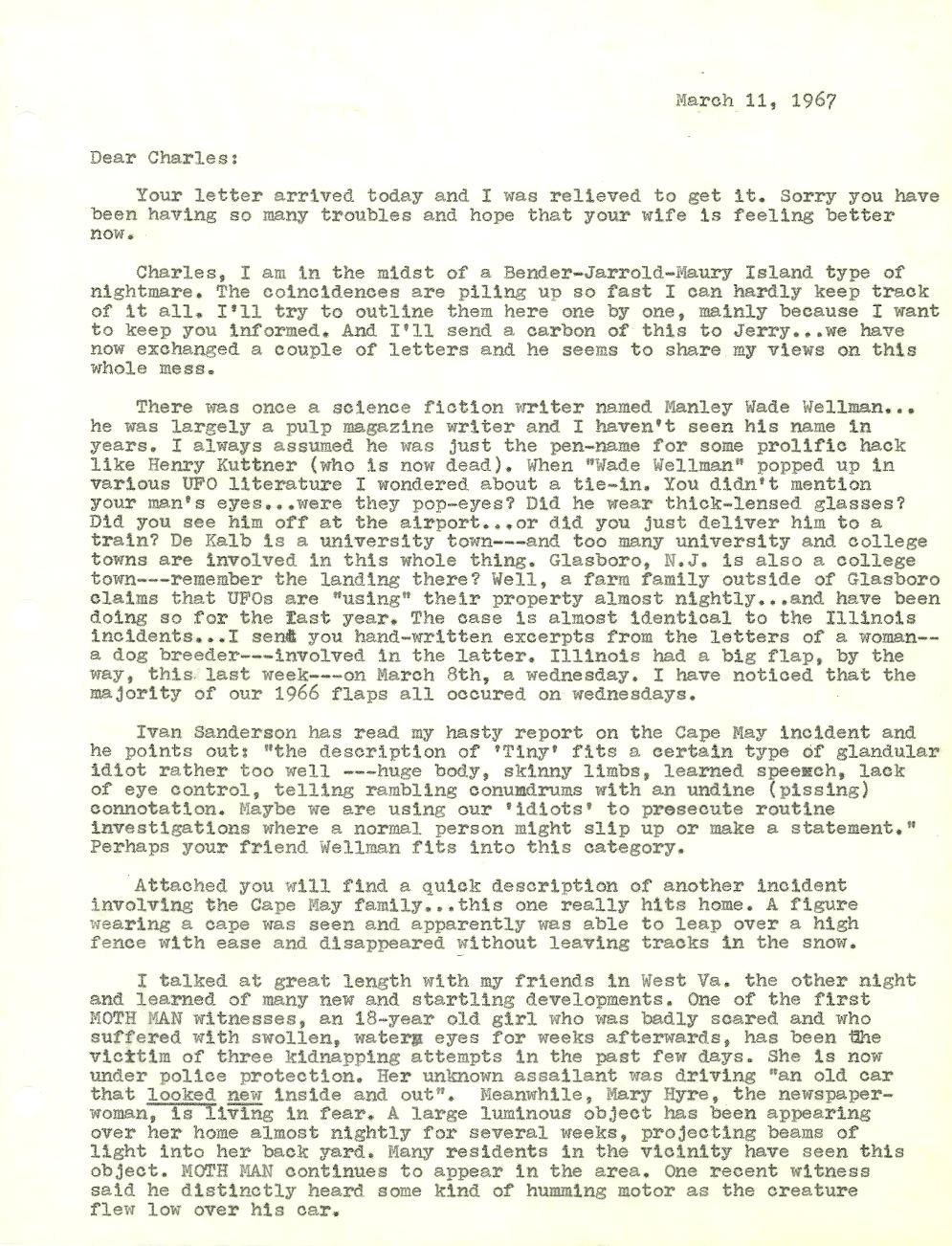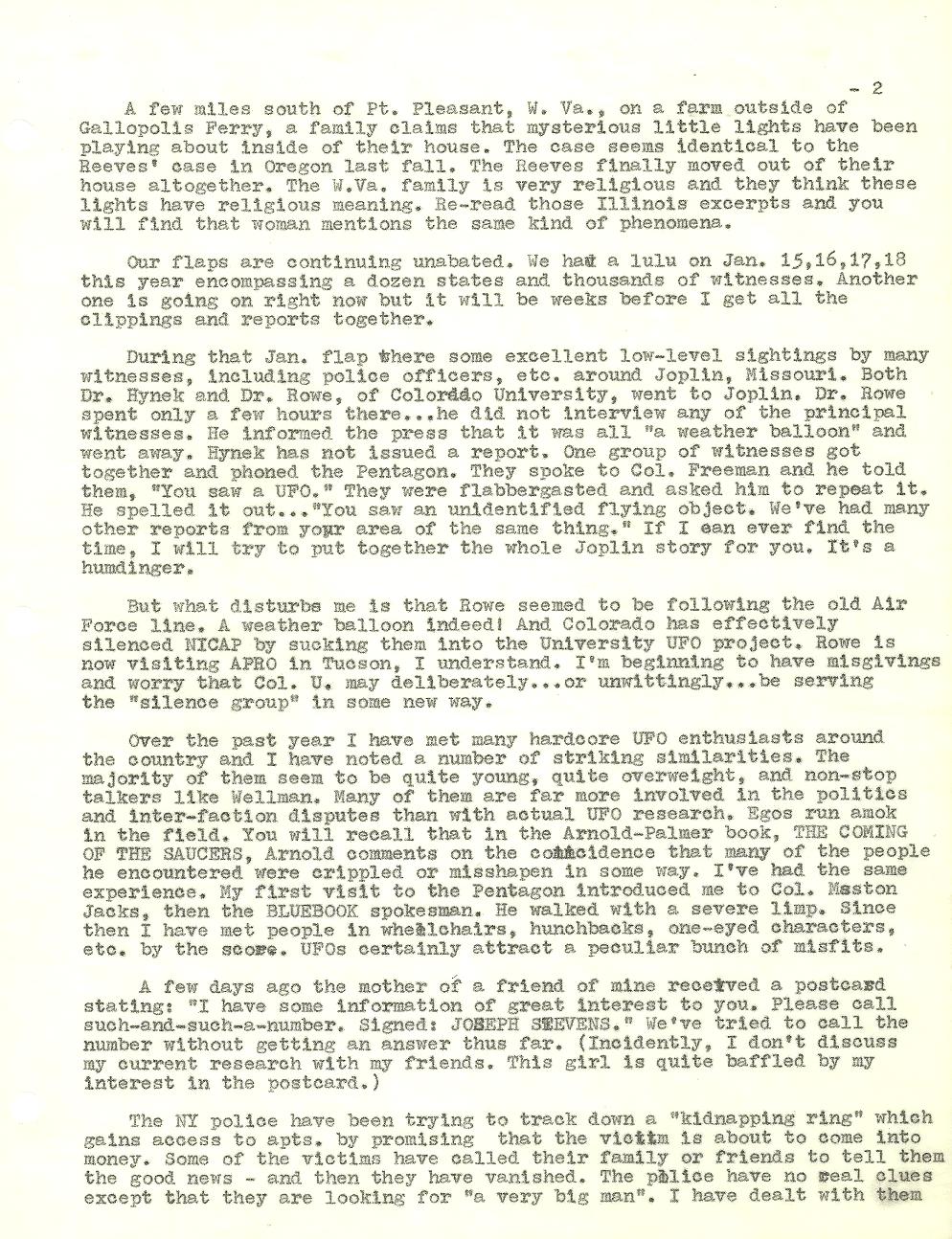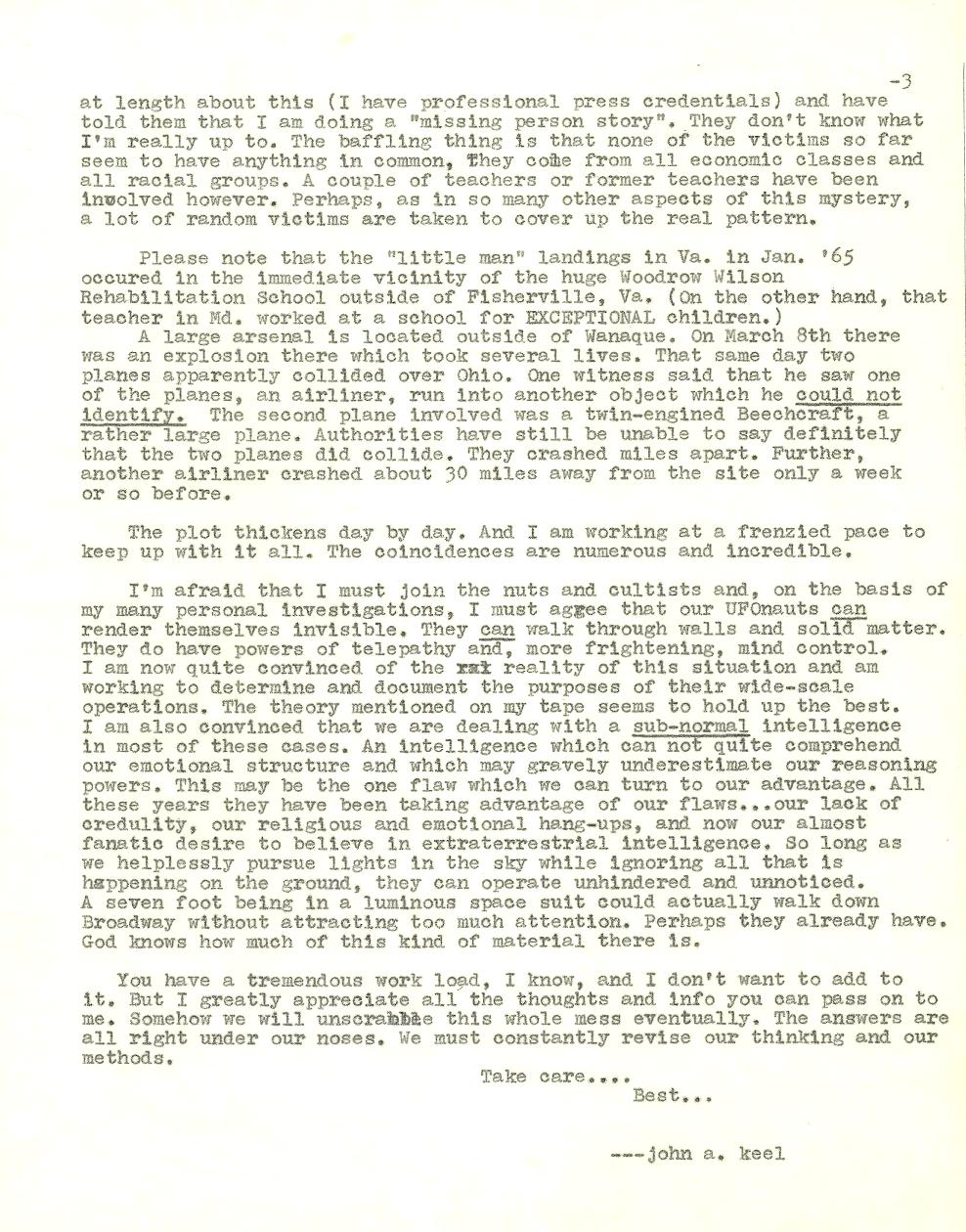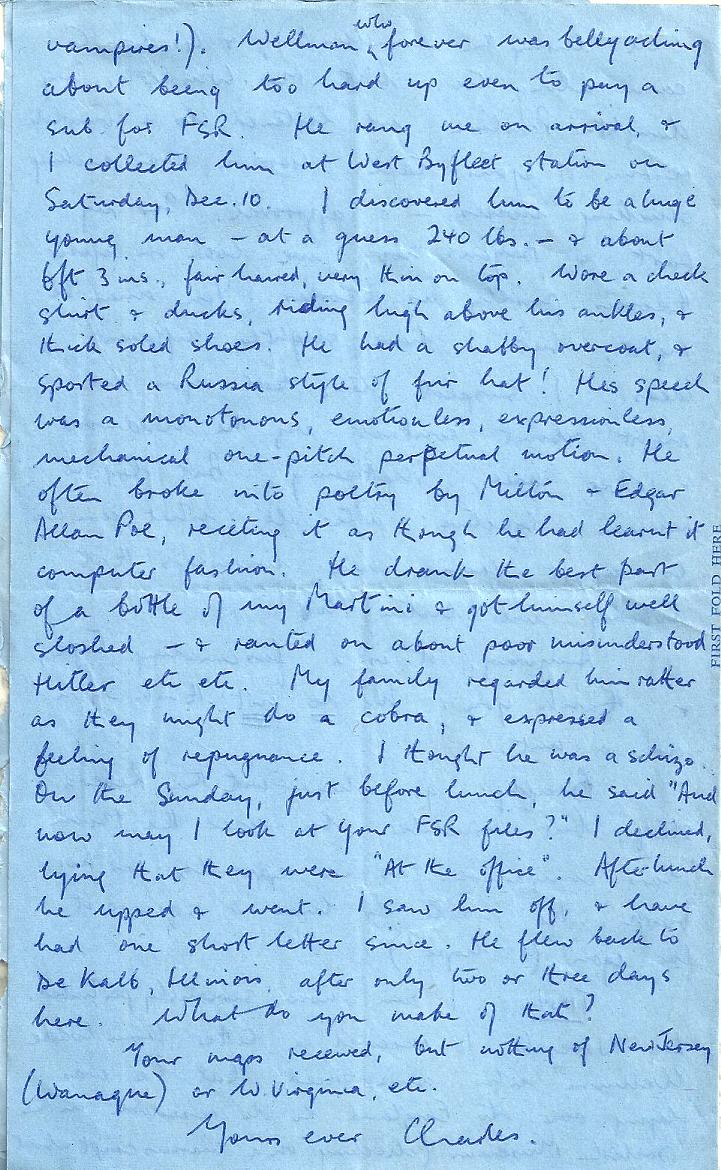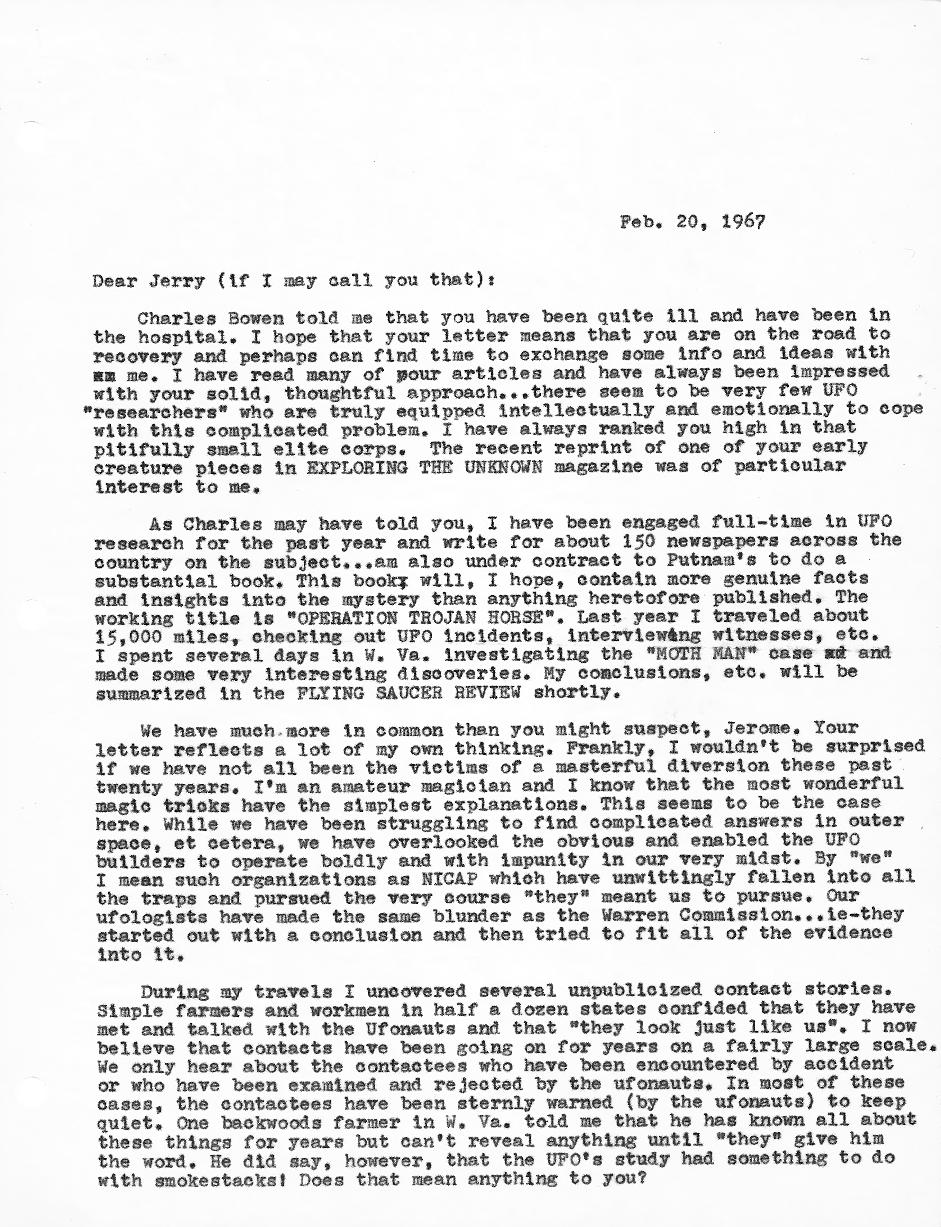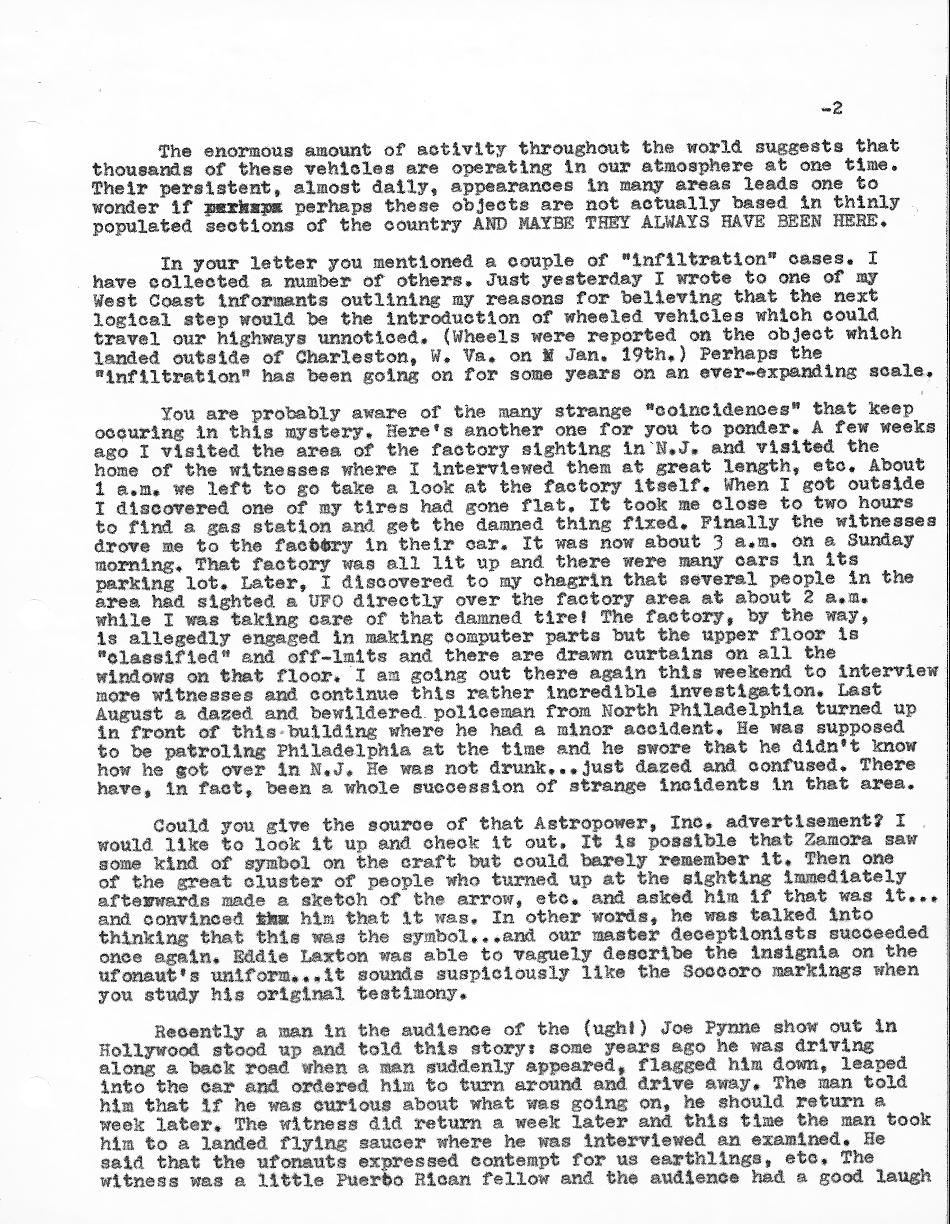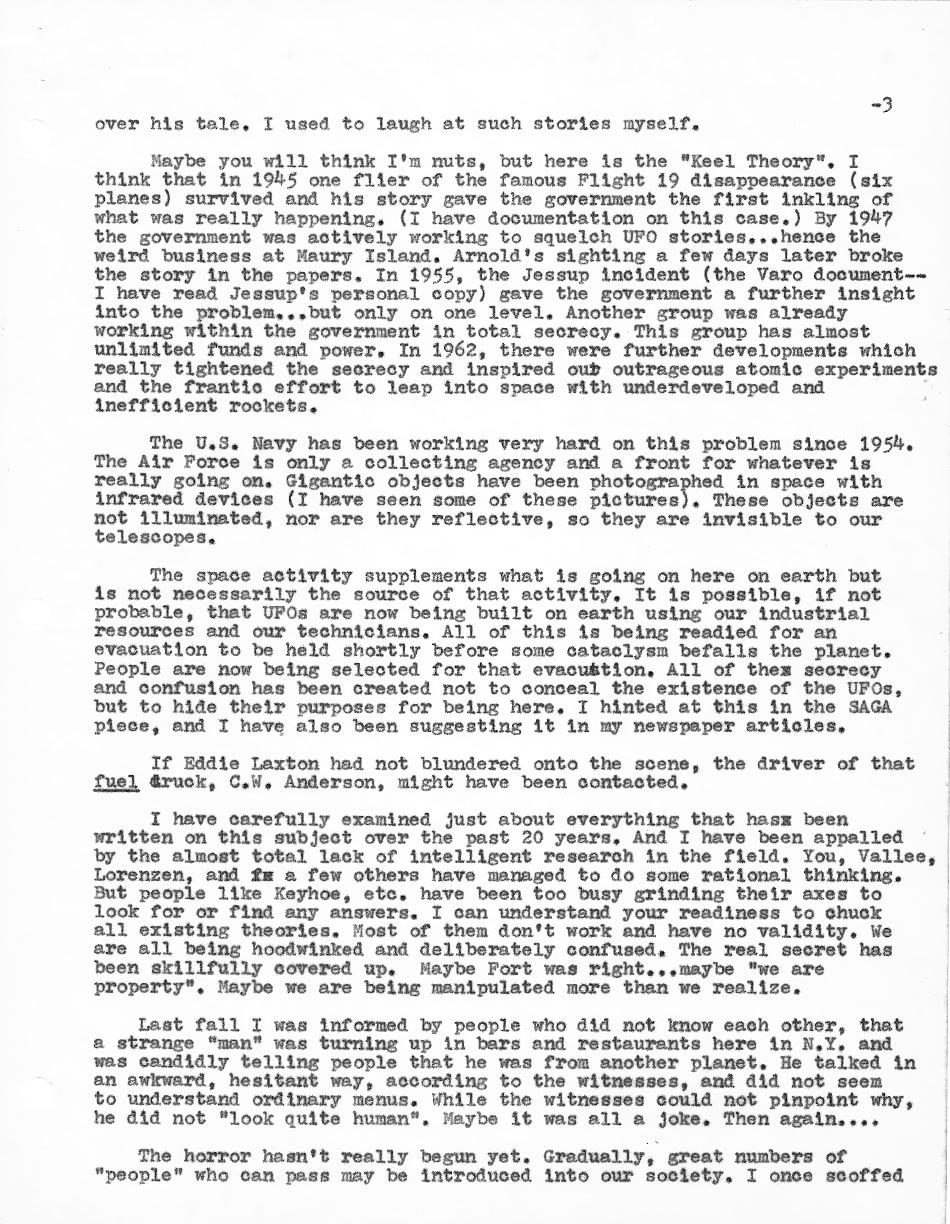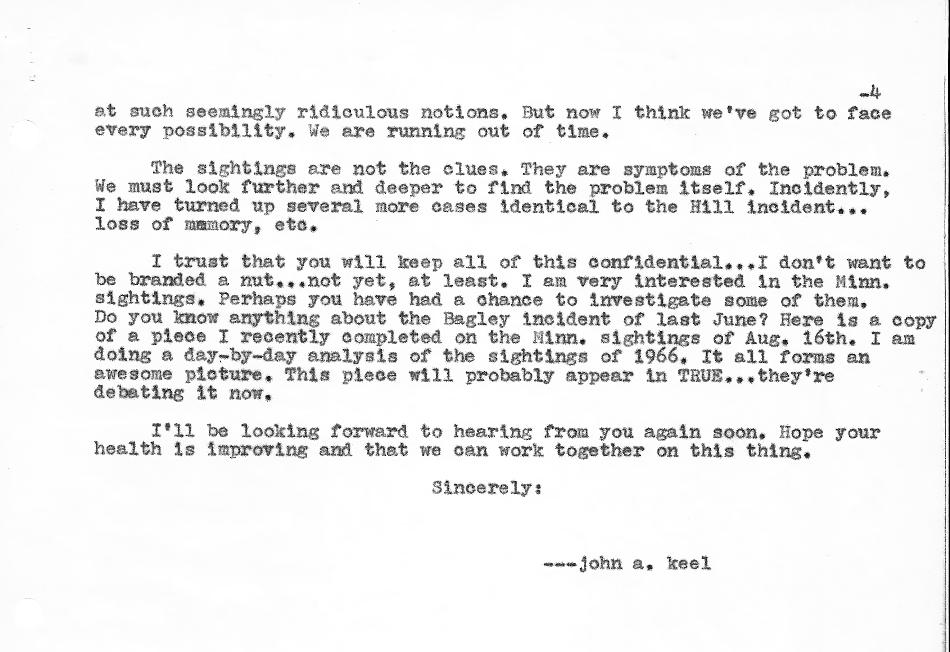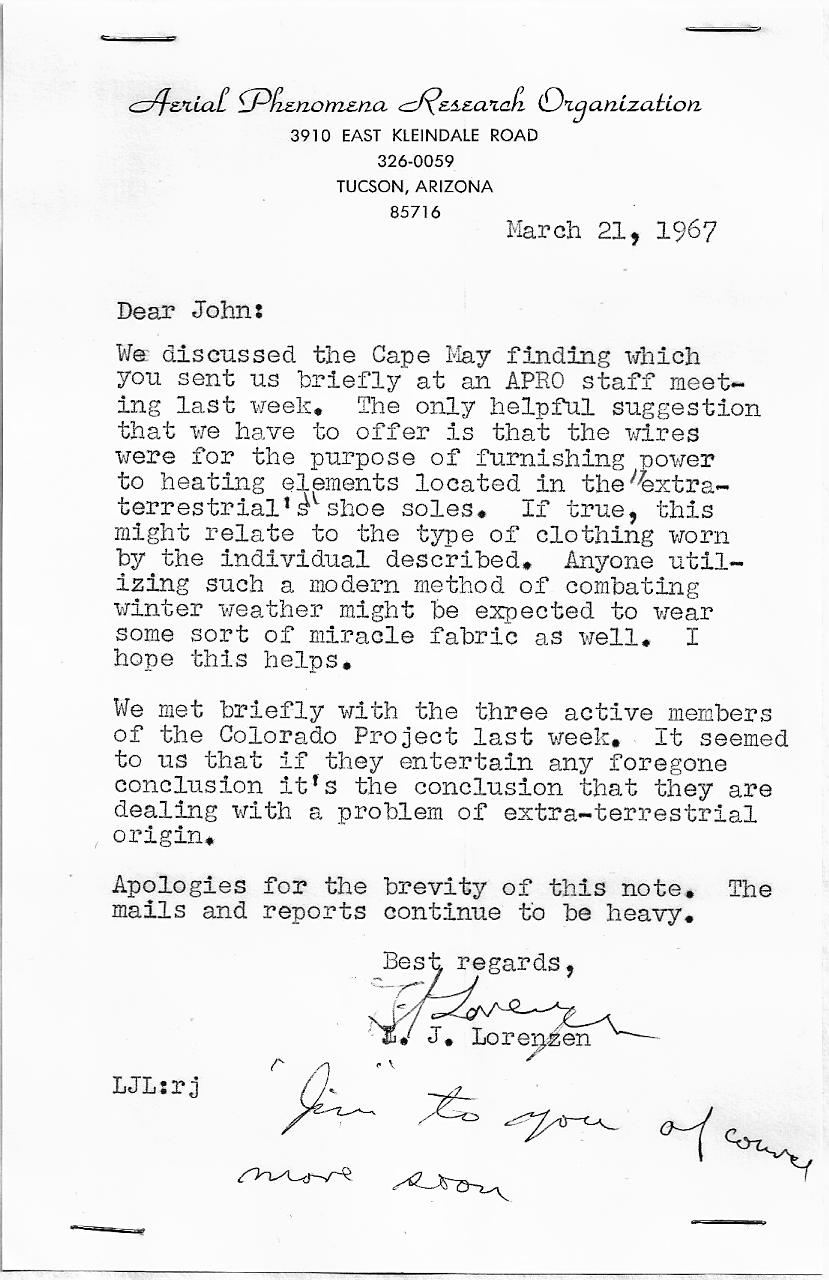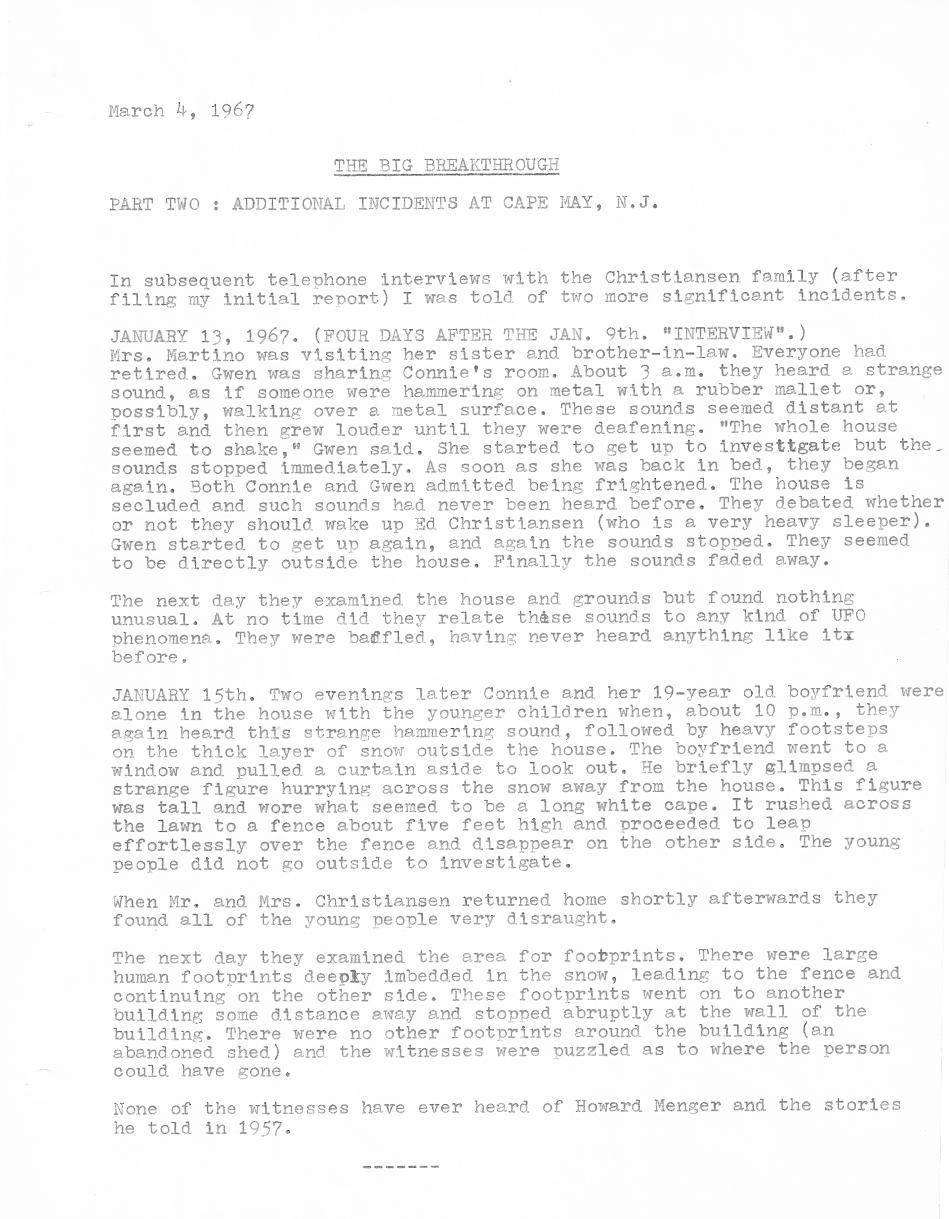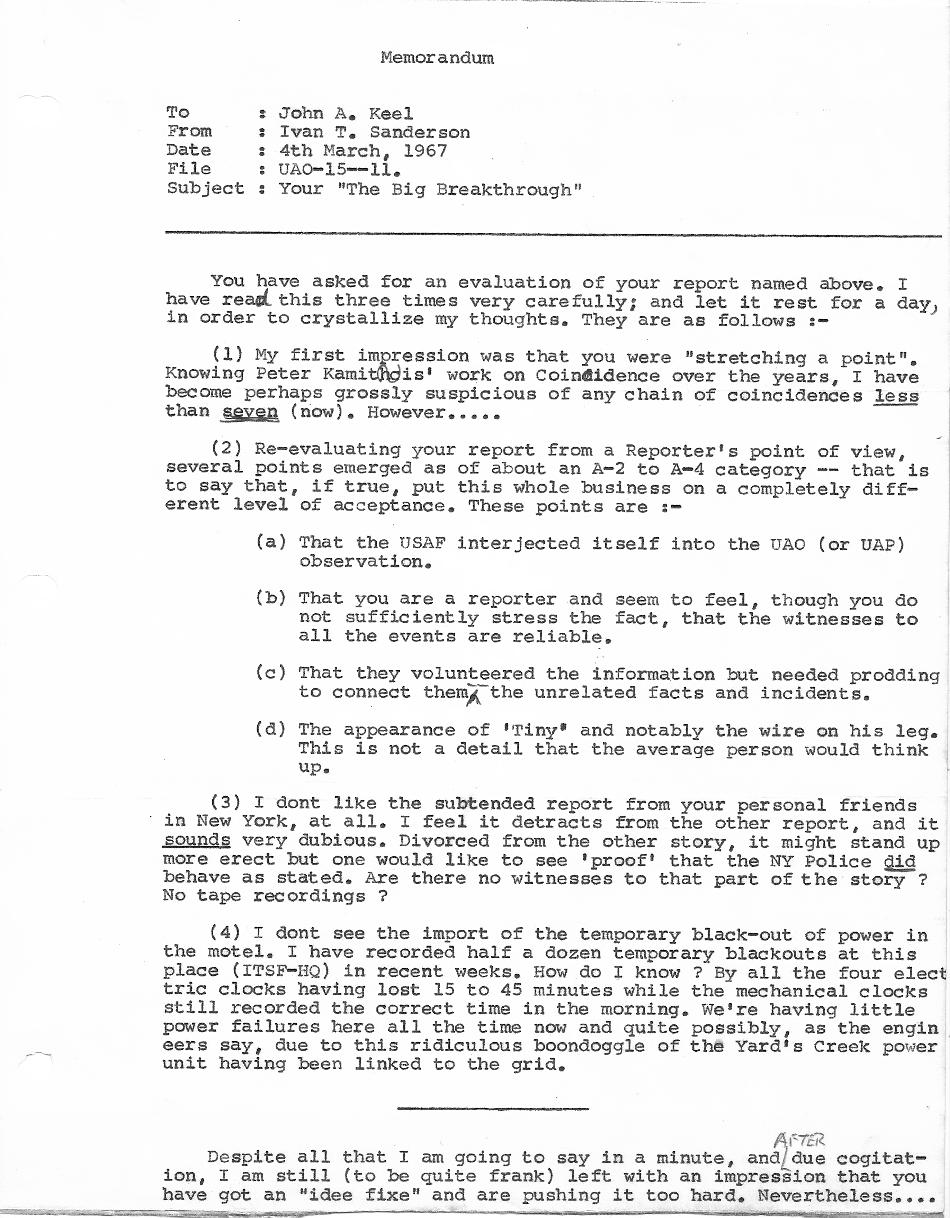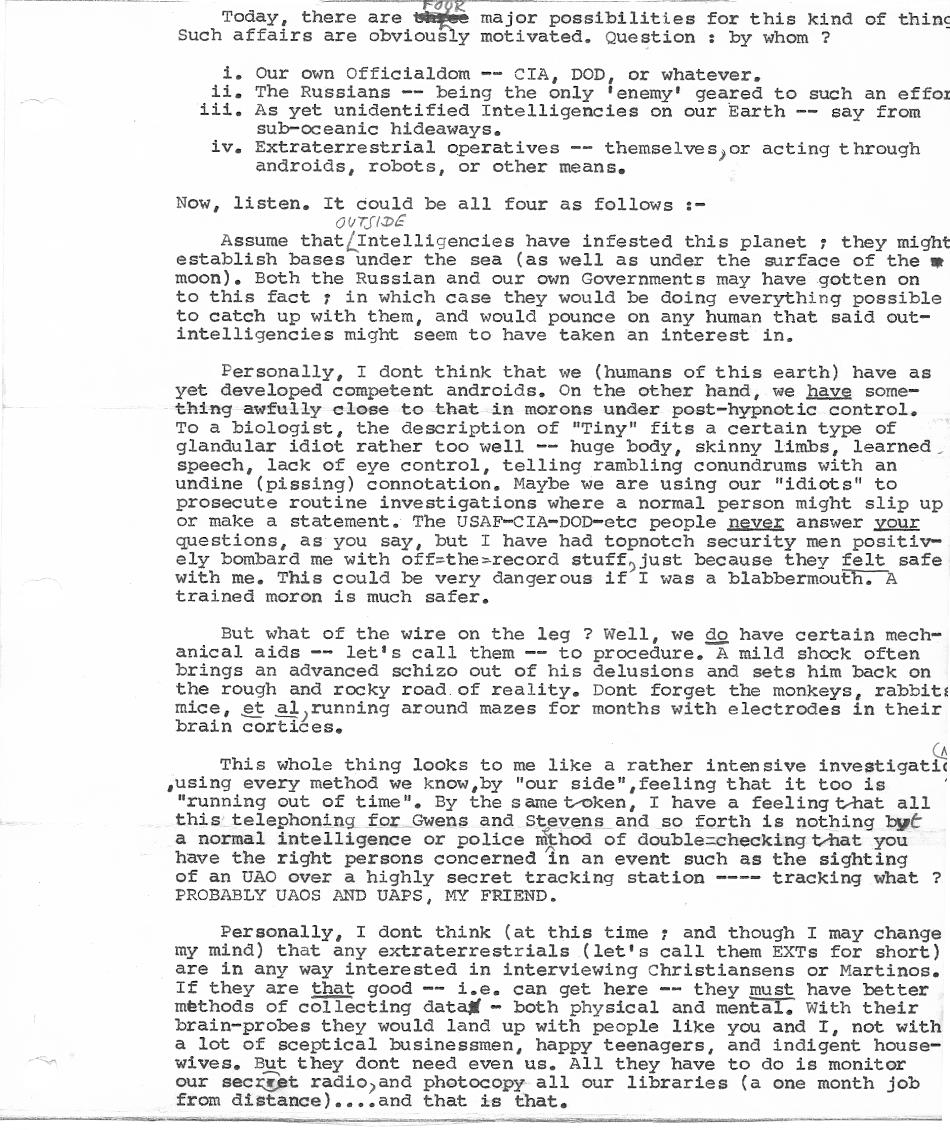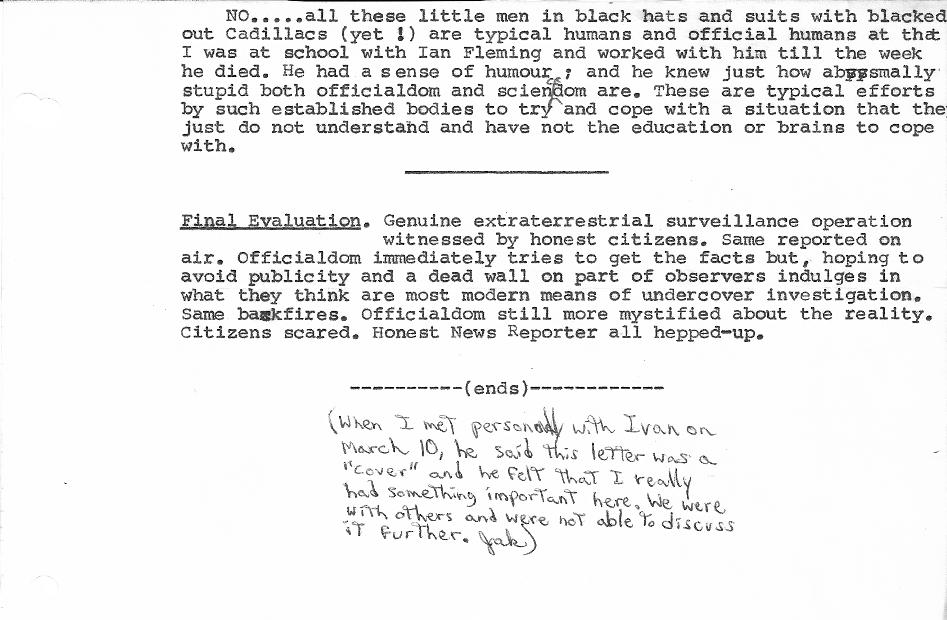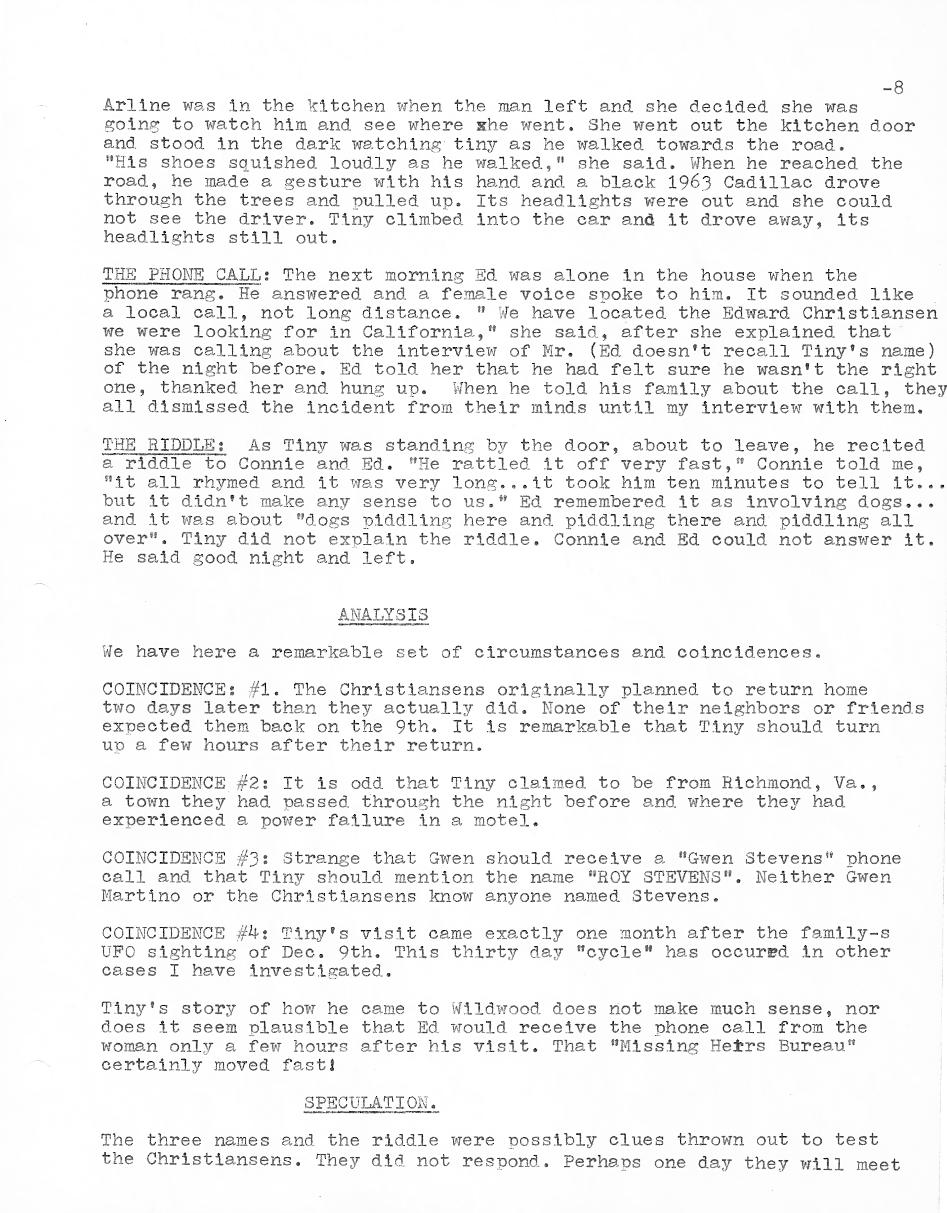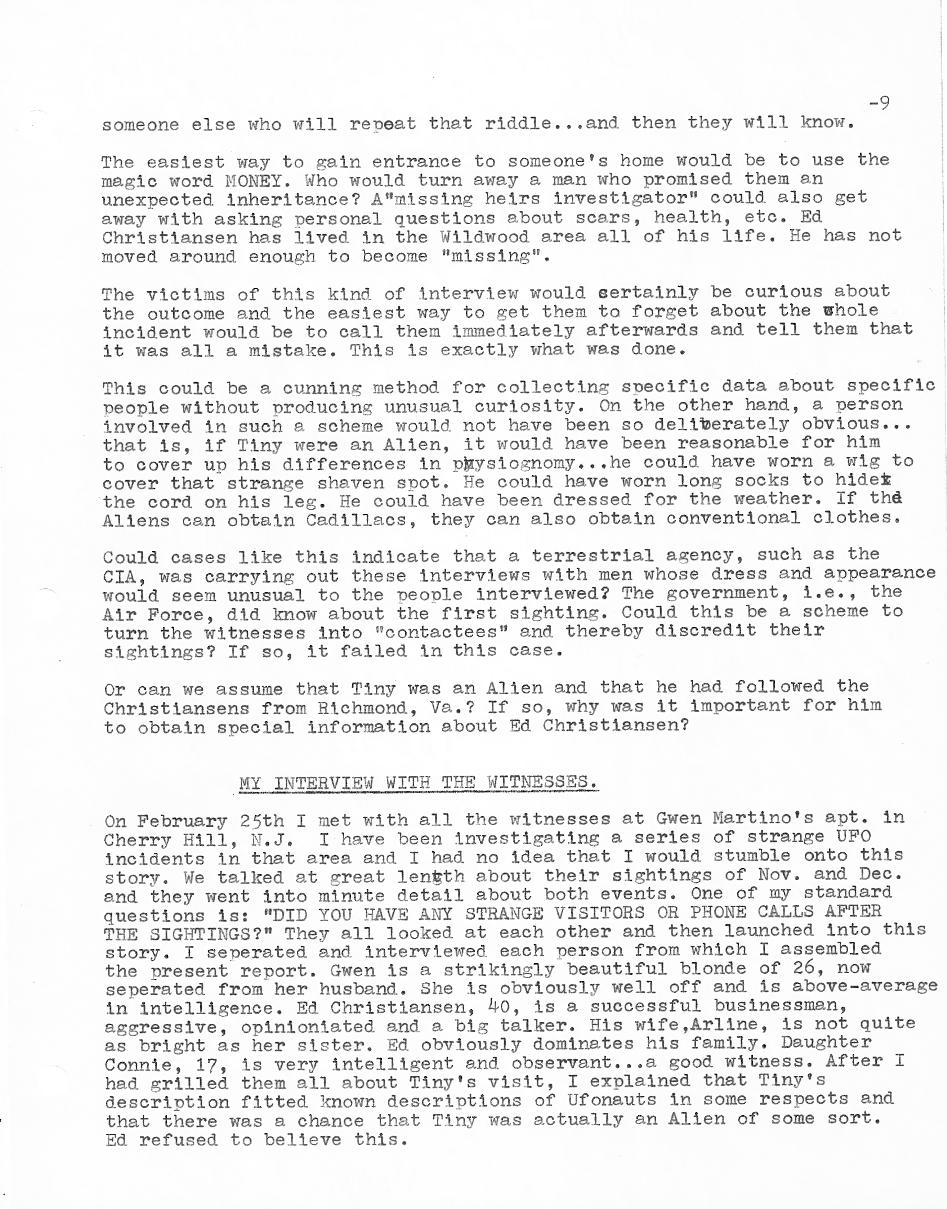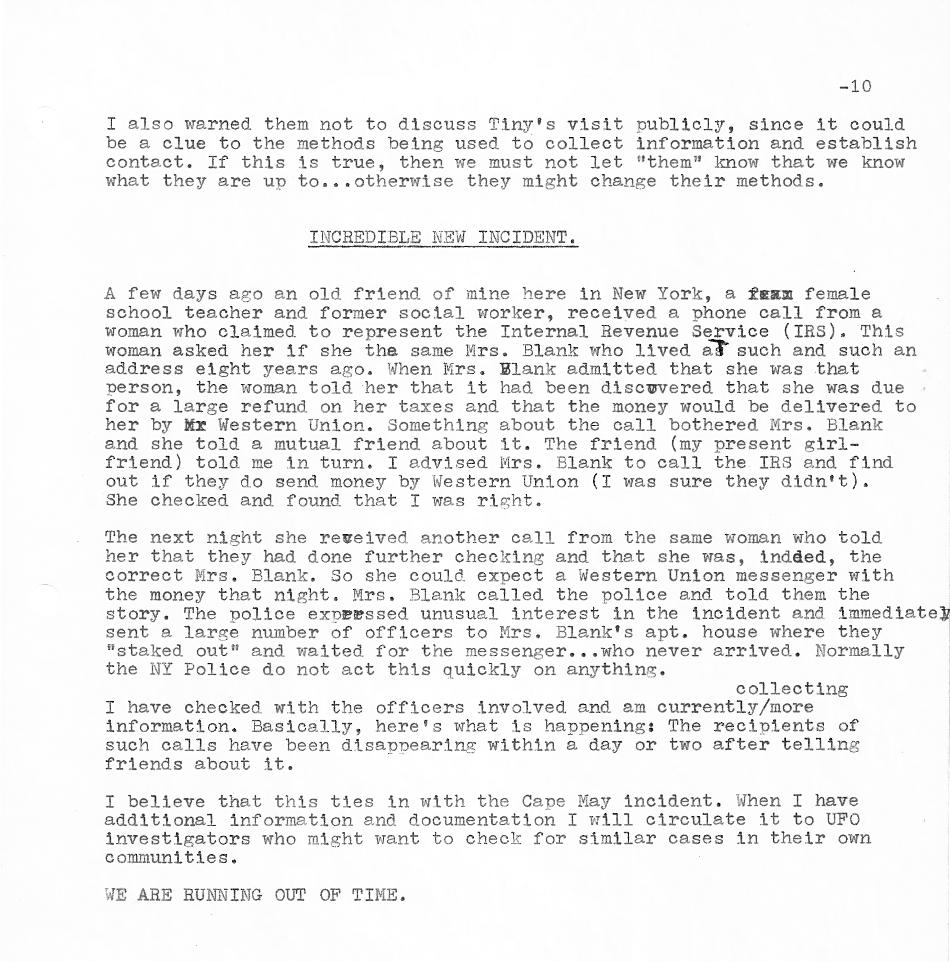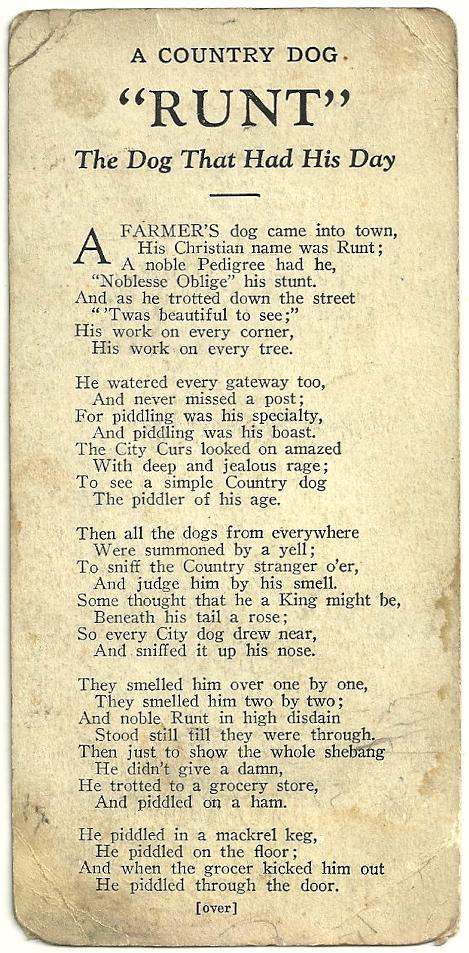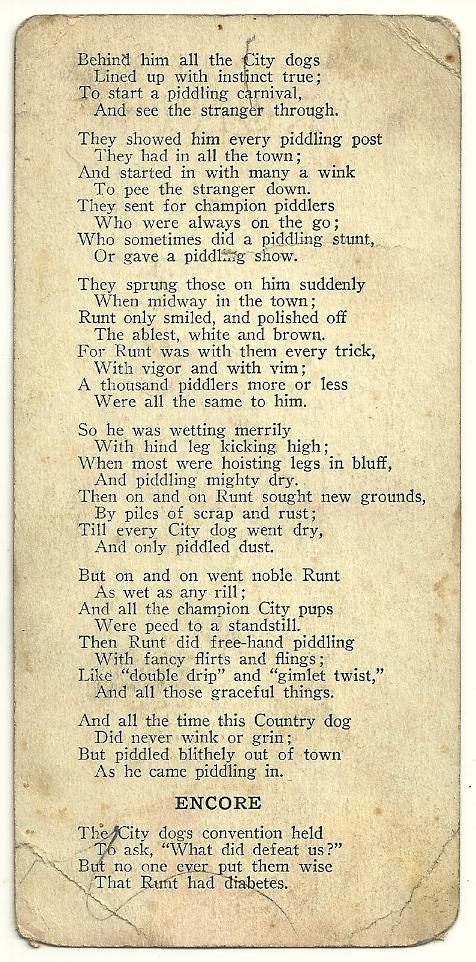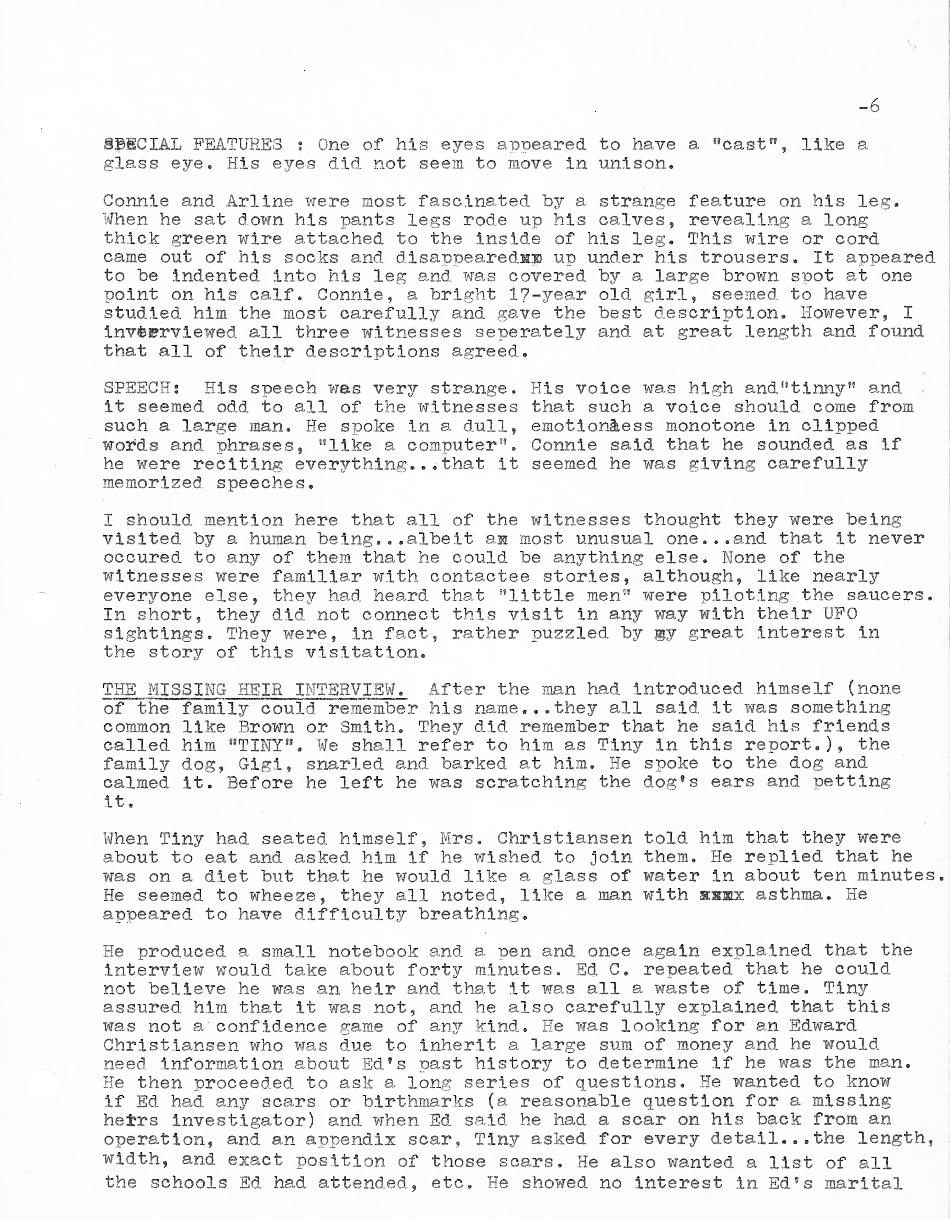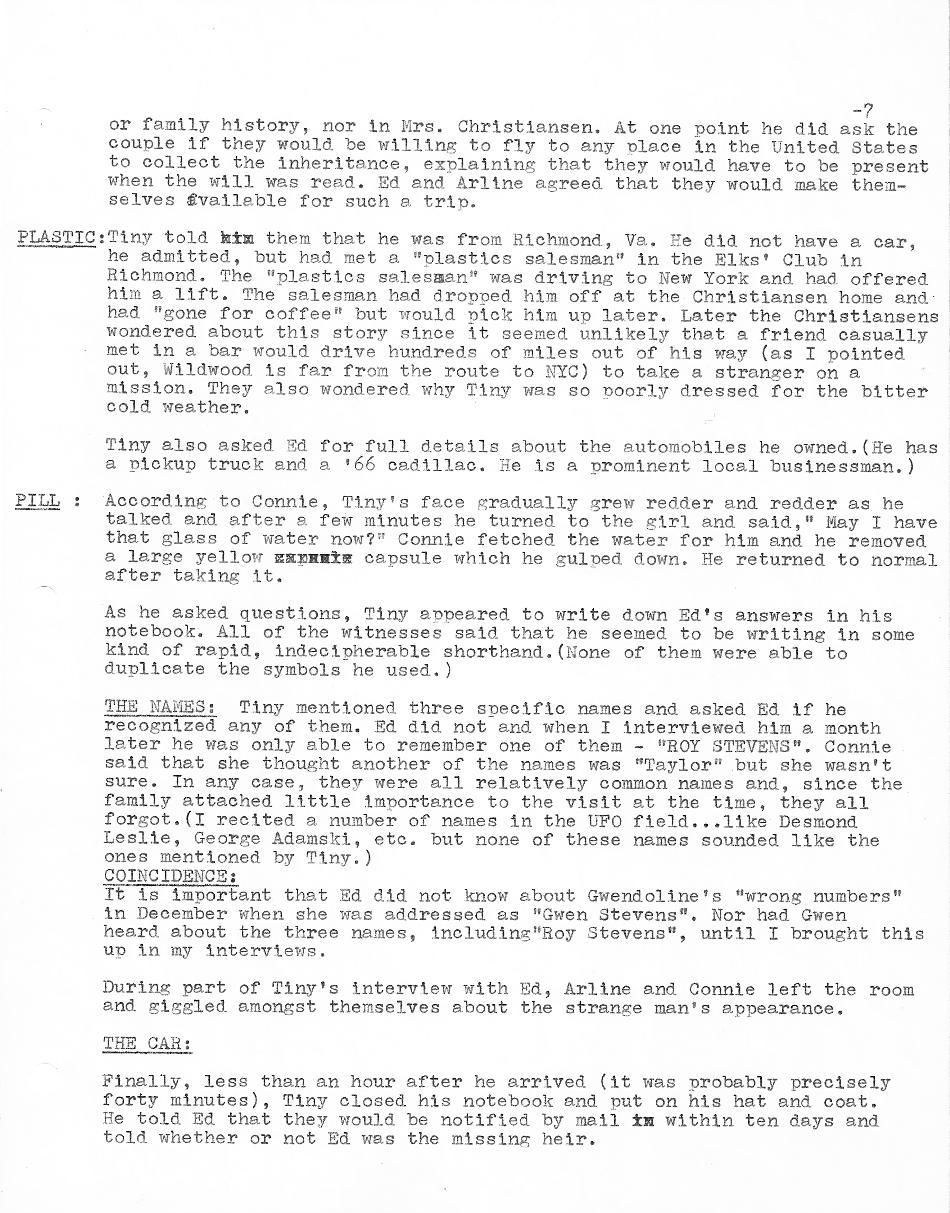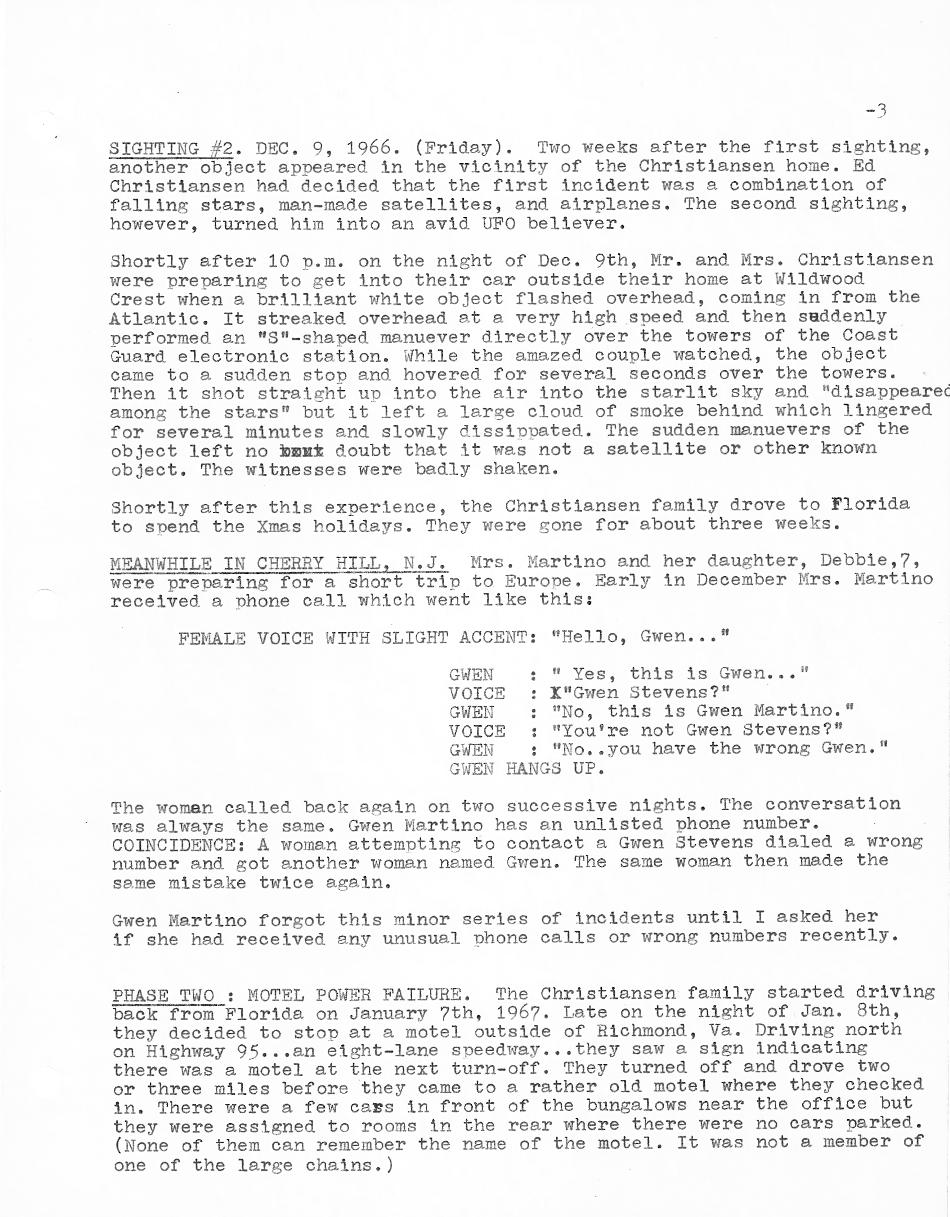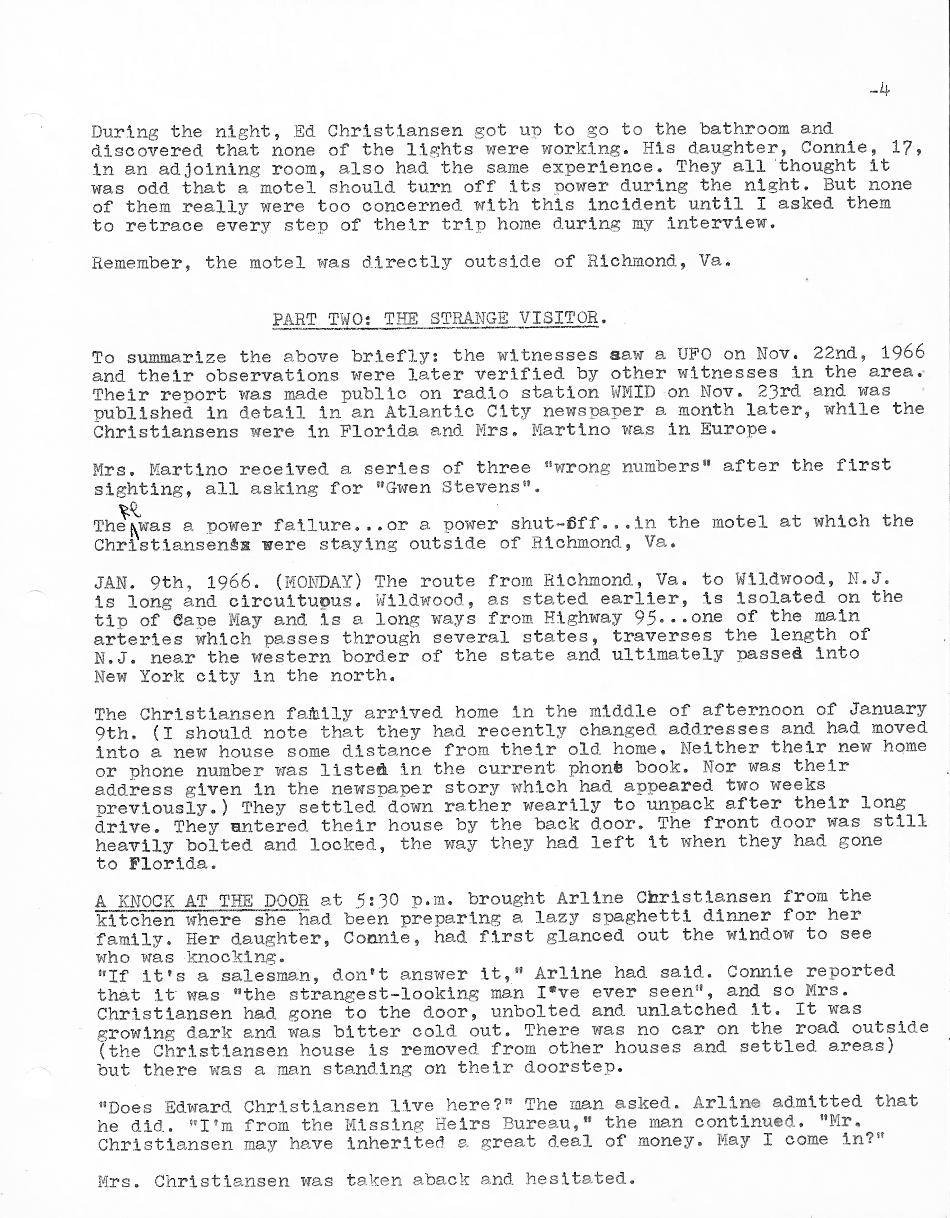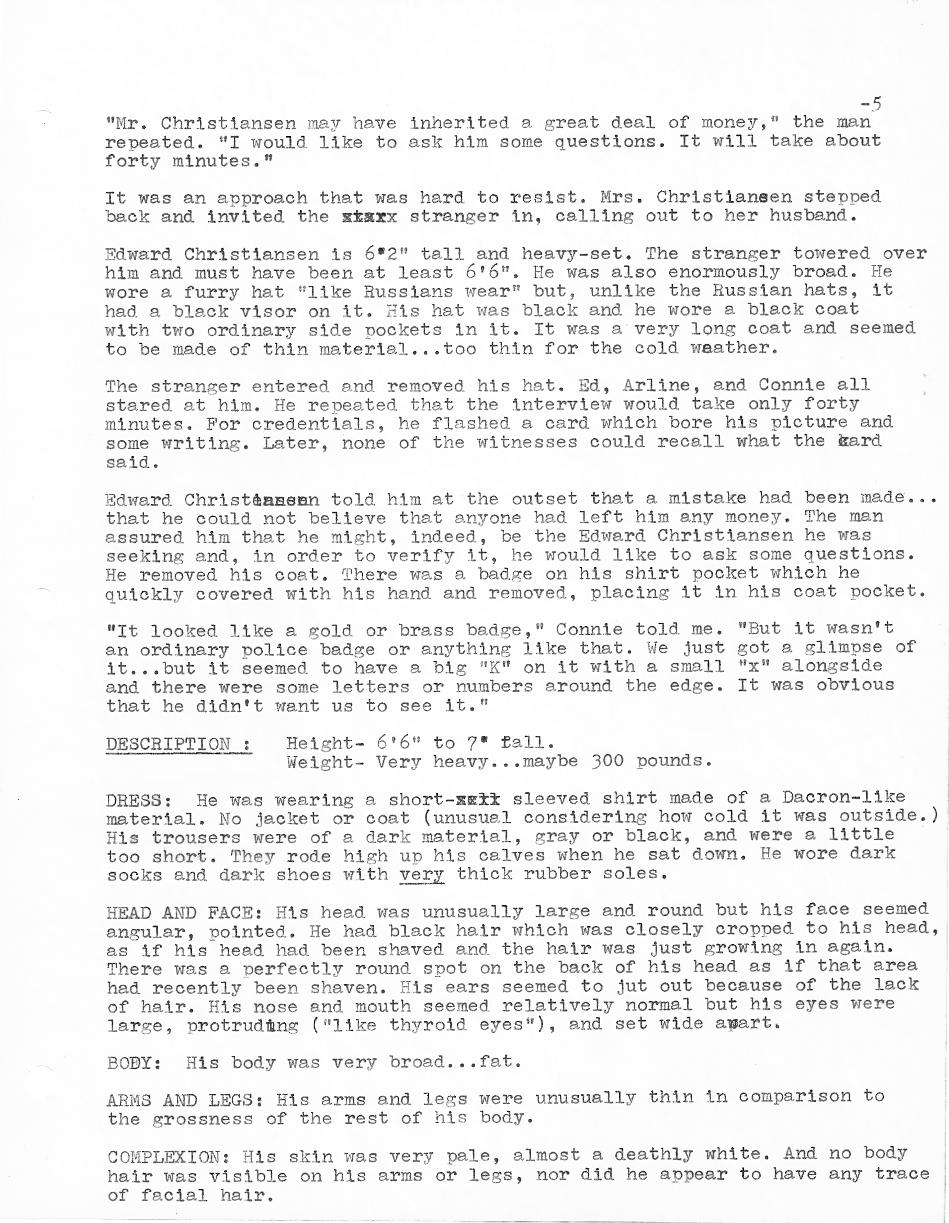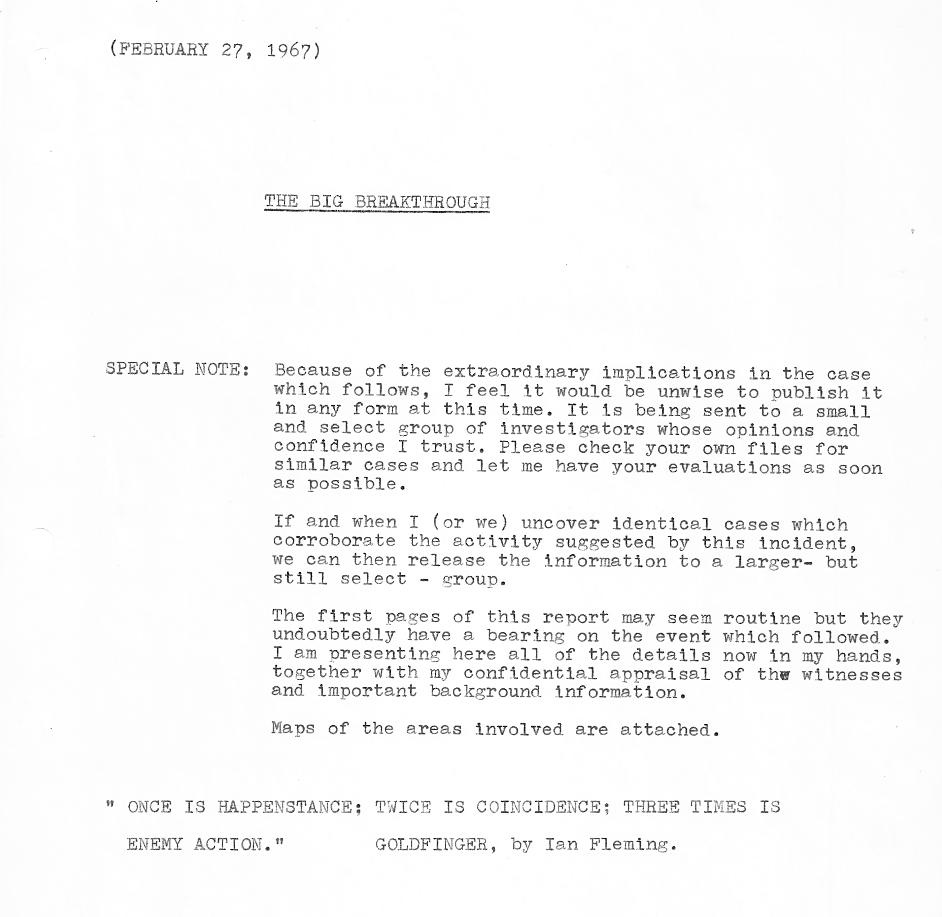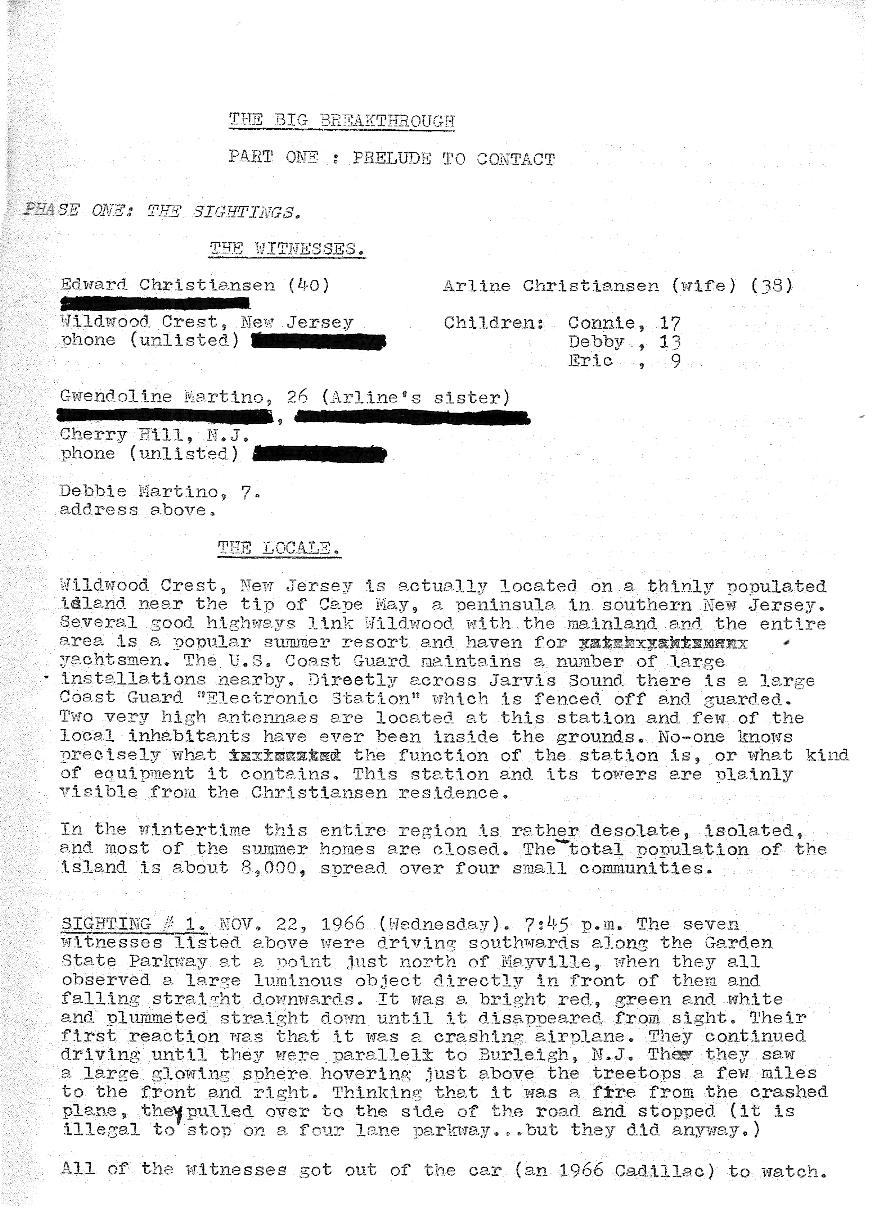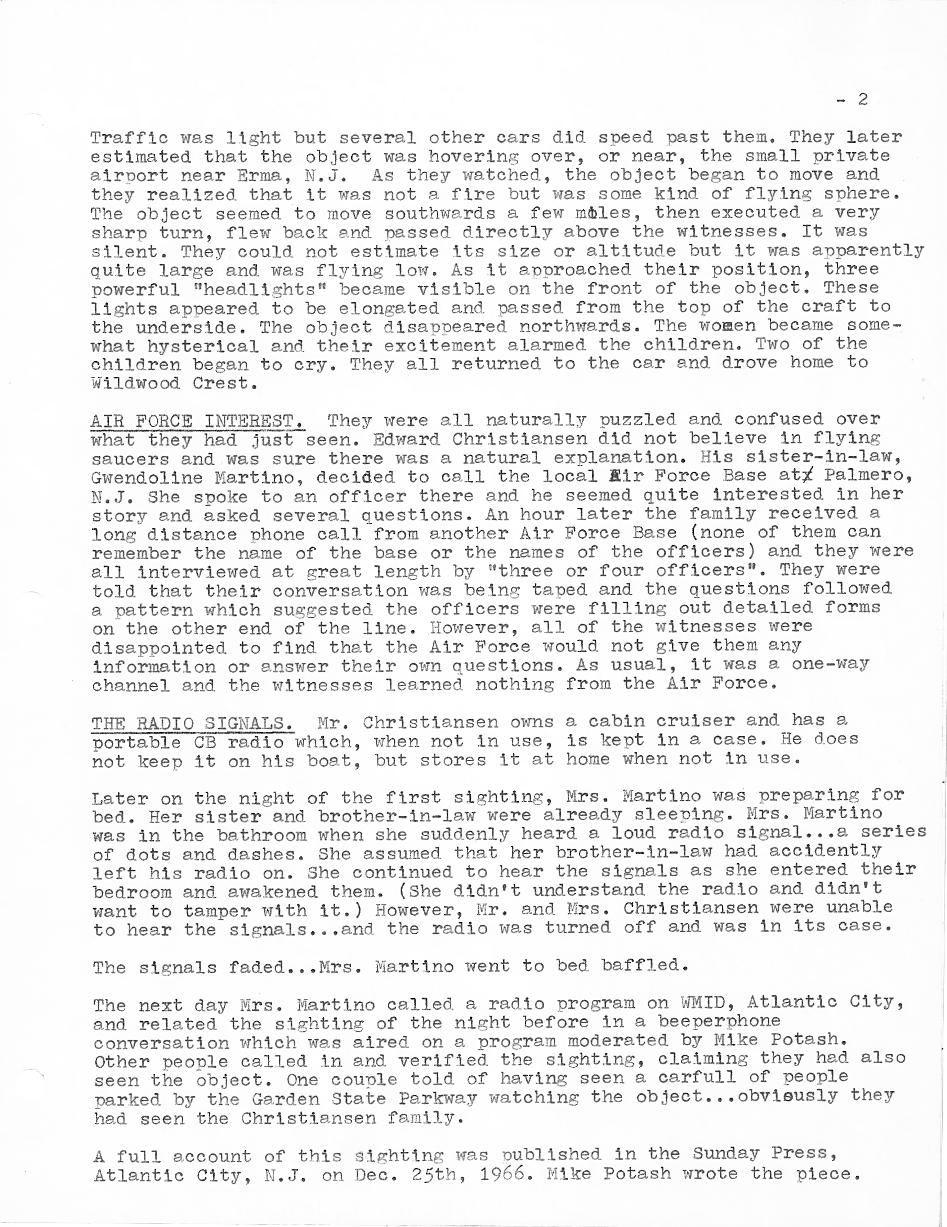mile Jerome Clark responded to John’s letter, mentioning that he was seeing a therapist to cope with stress. John’s reply includes a rare account of his own visits to a psychiatrist, as he grew increasingly disenchanted with television work. The correspondent who was visited by the strange man who wanted “trip insurance” was Mabel McDaniel, mother of one of the first Mothman witnesses, Linda Scarberry, and a witness herself.
February 14, 2016
February 10, 2016
A Letter to Charles Bowen, March 11, 1967
John responded to Charles Bowen’s letter with a report on his recent research, particularly the events in Point Pleasant. He also wonders why “UFOS certainly attract a peculiar bunch of misfits.” The postcard from Joseph Stevens that he mentions turned out to be a legitimate business solicitation from a funeral home.
January 20, 2016
A Letter from Charles Bowen, July 2, 1967: Is This Tiny?
Charles Bowen (editor of the British Flying Saucer Review) responded to “The Big Breakthrough” with a letter on July 2, 1967, including a description of a visit from a man who sounds a lot like Tiny. I posted this a couple of years ago, but deleted the name. On further consideration, I decided to post it here. The possible Tiny candidate was Wade Wellman, the son of the novelist Manly Wade Wellman. I spoke with someone who had met him; he said Wellman was later institutionalized.
Wellman does sound a lot like Tiny, even down to the hat and the habit of reciting poetry. It may be an explanation for one notable Man In Black encounter. Even if it is, it raises more questions. Why didn’t he give his name? Why was he asking about inheritances? If he was interested in UFOs, why didn’t he ask about them? At any rate, here’s a bit more of the puzzle.
TINY. I am now seriously perturbed. In November I received a letter from Wade Wellman who announced that he was flying over to England to do research in the British Museum (checking on a manuscript about vampires!). Wellman who forever was bellyaching about being too hard up even to pay a sub for FSR. He rang me on arrival, & I collected him at West Byfleet station on Saturday, Dec. 10. I discovered him to be a huge young man — at a guess 240 lbs. — & about 6 ft. 3 ins., fair haired, very thin on top. Wore a check shirt & ducks, riding high above his ankles, & thick soled shoes. He had a shabby overcoat, & sported a Russian style of fur hat! His speech was a monotonous, emotionless, expressionless, mechanical one-pitch perpetual motion. He often broke into poetry by Milton & Edgar Allan Poe, reciting it as though he had learnt it computer fashion. He drank the best part of a bottle of my Martini & got himself well sloshed — & ranted on about poor misunderstood Hitler etc. etc. My family regarded him rather as they might do a cobra, & expressed a feeling of repugnance. I thought he was a schizo. On the Sunday, just before lunch, he said “And now may I look at your FSR files?” I declined, lying that they were “At the office”. After lunch he upped & went. I saw him off, & have had one short letter since. He flew back to De Kalb, Illinois, after only two or three days here. What do you make of that?
Your maps received, but nothing of New Jersey (Wanaque) or W. Virginia, etc.
Yours ever Charles.
December 22, 2015
A Letter to Jerome Clark, Feb. 20, 1967
As John continued to puzzle over the Tiny encounter, he received his first letter from Jerome Clark. Clark introduced himself, and sent some recent sightings and speculations. John’s response is a good summation of his ideas at the time, more candid than his published articles, in which he was sometimes reined in by his editors. Both his ideas and his relationship to Jerome Clark changed over the years.
The “infiltration” John mentions was a report about a UFO releasing cars onto a highway. The Astropower symbol was a logo that resembled those reported on UFOs. The detail about the smokestacks is intriguing. What was that about?
I probably won’t have much of a chance to post here in the next few weeks, since I’ve just moved from Manhattan, haven’t quite moved into a new place upstate, and am staying with friends in the interim, as my files wait patiently in storage. Meanwhile, rather than offer you a generic Happy Holidays, I wish you a Merry Christmas, Happy Hanukkah, Joyful Kwanzaa, Bright Solstice, and Filthy Saturnalia.
December 14, 2015
The Big Breakthrough (6)
John sent copies of “The Big Breakthrough” to a number of his fellow researchers. Here’s Jim Lorenzen’s response, a speculation on that odd detail about the wire in Tiny’s leg.
December 2, 2015
The Big Breakthrough (5)
We continue with John’s original report on Tiny’s visit to the Christiansen’s. Here’s a short postscript, and a somewhat bemused response from Ivan Sanderson. Sanderson, for any readers new to this, was a zoologist and fortean, and founder of the fortean organization SITU, the Society for the Investigation of the Unexplained; he was a bit concerned about the direction John’s research was taking.
November 16, 2015
The Big Breakthrough (4)
And here’s the next part of John’s original report on Tiny’s visit to the Christiansens. It includes a strange detail omitted from the version in The Mothman Prophecies: Tiny recites a long poem about piddling dogs. It reminds me of a traditional verse called “Runt, or the Piddlin’ Pup,” often reprinted in collections of bawdy songs and verse, and set to music more than once. I’ve posted an old version I found in an antique store, after John’s report. It’s not really a riddle, unless Tiny wanted them to guess the punchline.
November 9, 2015
The Big Breakthrough (3)
Here’s the third installment of John’s original report on Tiny’s visit to the Christiansens, as later described, in less detail, in The Mothman Prophecies. Read on…
November 4, 2015
The Big Breakthrough (2)
Here’s the next part of John’s original notes on Tiny’s visit to the Christiansens, as shared with other researchers in 1967. Read on…
October 31, 2015
The Big Breakthrough (1)
The story of the Christiansen family and their encounter with the disturbing Man In Black, Tiny, has baffled many readers of The Mothman Prophecies. Soon after John interviewed the Christiansens, he wrote a report on it, which he sent to fellow researchers, including Charles Bowen and Ivan Sanderson. It was not intended for publication, and goes into more detail than the account in the book. I’ll post it in a few sections, and follow it up with some of his colleagues’ reactions. I’ve crossed out the addresses and phone numbers of the witnesses, just in case anyone is still living there.
